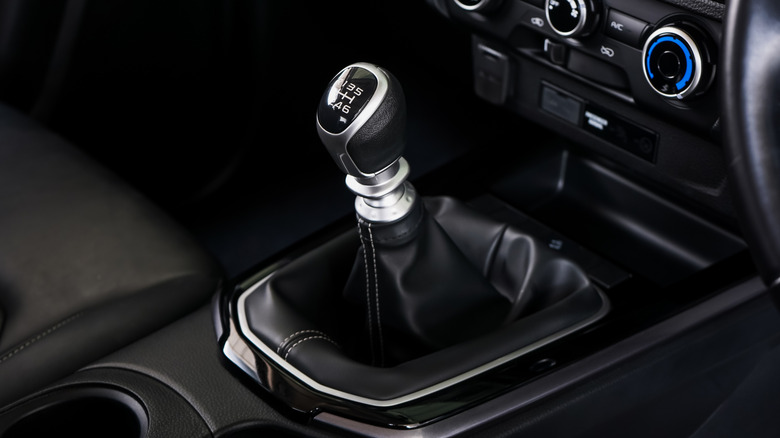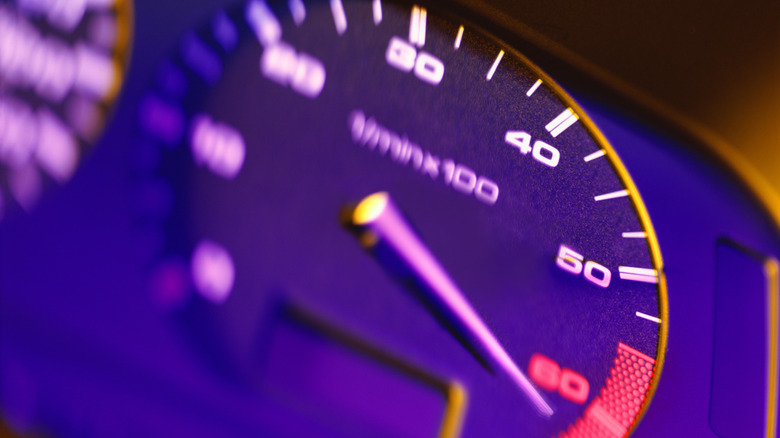What Is Rev Matching On A Manual Transmission? (And Can It Burn Your Clutch?)
Manual cars are a dying breed, and driving one is a fading art form. Driving a manual isn't simply about changing gears — it's about the timing of the shifts, coordinating the engine speed and gear ratios to sync into one harmonious action. In pursuit of this driving gratification, an advanced technique known as rev matching is often employed. Utilized in performance driving, rev matching aids in smoothing out downshifts by syncing the speed of the engine with the speed of the drivetrain. It may sound like a move for racers, but it's just as useful on the road, if done correctly.
Essentially, rev matching involves blipping the throttle as you downshift in order to match the engine RPM with the lower gear before the clutch re-engages. This helps get rid of the jolt you receive when wheel speed and engine speed are not in sync. Rev matching reduces shock to the drivetrain and helps preserve transmission components during spirited driving.
However, there are many drivers who worry about the wear-and-tear that can occur as a result of rev matching, like wearing out your clutch faster, or worse, burning it completely. The outcome depends on technique and whether the driver is able to implement it correctly.
How rev matching works and why it matters
To begin understanding how rev matching works, a good starting point is to know what happens when one downshifts. Generally, when the clutch is pressed as you drop into a lower gear, the engine suddenly needs to spin much faster so it can match the new gear ratio. If you were to just let the clutch out without adjusting the throttle, the car would jolt as a result of the clutch having to force the engine to speed up to match the wheels, putting unnecessary pressure on your drivetrain.
Luckily, rev matching solves this problem. When a driver blips the throttle — or briefly increases the RPM — before letting the clutch out in a lower gear, they bring the engine speeds closer to what it needs to be for the gear. The result? A much more seamless transition. This is especially useful during faster driving or when braking into a corner. Rev matching is an essential skill in performance driving and racing as it improves vehicle control and reduces mechanical stress.
Many newer manual performance vehicles offer an automated rev-matching function. Brands like Nissan, Toyota, and Hyundai all utilize it, allowing drivers to enjoy the benefits without needing advanced driver skills. Whether you're using technology to assist your or finessing it manually, rev matching adds a needed driving precision and longevity to your drivetrain when done right.
Can rev matching damage your clutch?
The good news is that proper rev matching doesn't burn your clutch, in fact, it may help extend its life. When you match the speed of the engine to the transmission, you are reducing the amount of stress put on the clutch during shifting. Normally the clutch would be forced to compensate for the mismatch in RPM, rev matching thus alleviates this friction and decreases wear.
However, if not done correctly, rev matching can cause damage. If you overshoot or undershoot the throttle blip and do not match the target RPM, the clutch will end up taking the hit of the mismatch. Unfortunately, bad technique can actually be worse than not rev matching at all, especially if you consistently get the timing incorrect or abruptly release the clutch. It's also crucial not to confuse rev matching with "moneyshifting" – the potentially catastrophic act of downshifting to a lower gear while at high speeds, destroying your engine or transmission instantly.
Rev matching is actually clutch-friendly, as long as it is executed well and the clutch is engaged smoothly. Track and racing drivers often rely on it because it greatly reduces component stress and promotes longer part life. If your shifts start feeling sloppy or if you notice early symptoms of wear, you may already be dealing with a clutch that's failing.


